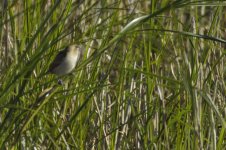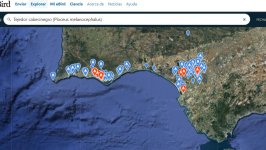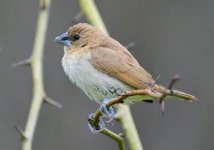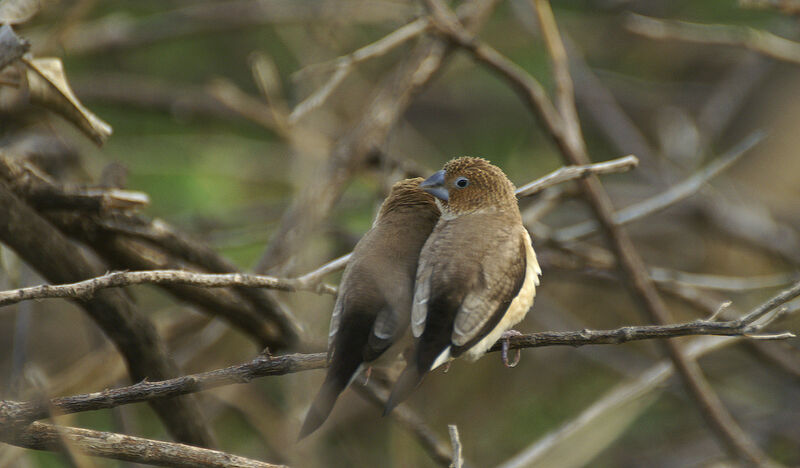buck mulligan
TCMits

Hello everyone
after a wonderful week in the Algarve...
we had great difficulty with a Little Brown Job (LBJ)
in the rice fields on the Rio Arade north of Portimão - the rice had been harvested in parts of the field with the remaining stubble much higher than wheat
Exact location : Arrozal Nossa Senhora do Rosário 37.16918440670148, -8.48526169129775
there was a bird that drove us crazy
we never saw it well but over a couple of hours and with lots of fleeting sightings we still had difficulties resuming what we had seen
we observed
very gregarious behaviour -constantly forming and reforming loose flocks with maybe a hundred present in the biggest flock
the birds would move around and then just disappear when they landed in the fields of rice stubble
rapid flight with very rapid wing beats
lots of call /whistles (too much wind for my telephone to record with BirdNet)
some, very few, seemed to land, very briefly, on a disused building but we never saw them perched on the rice stalks
Our on-site notes were
"Finch like"
Larger / heavier than e.g. Yellowhammer,
Grey / brown head
heavy grey / white bill
pale brown upper-parts
some white in the wing (bars ?)
and white (external ?) rectrices too ?
We just had great difficulty in describing these birds
We thought " Munia" but no with distinguishing criteria
No red beak etc. and we saw Munia perch on the rice stalks
After looking this up we thought maybe immatures., but would there be so many ?
Scaly-breasted Munia -Lonchura punctulata
Common Waxbill -Estrilda astrild
are present on the site and seen but they were identifiable even in this poor photo
your help please
Buck
PS
A big thank you to JLRamos who gave us the spot and lots of other very helpful ideas in the area
On the spot we had Osprey, Caspian Tern, Bluethroat, Jack Snipe and copulating Marsh Harriers
after a wonderful week in the Algarve...
we had great difficulty with a Little Brown Job (LBJ)
in the rice fields on the Rio Arade north of Portimão - the rice had been harvested in parts of the field with the remaining stubble much higher than wheat
Exact location : Arrozal Nossa Senhora do Rosário 37.16918440670148, -8.48526169129775
there was a bird that drove us crazy
we never saw it well but over a couple of hours and with lots of fleeting sightings we still had difficulties resuming what we had seen
we observed
very gregarious behaviour -constantly forming and reforming loose flocks with maybe a hundred present in the biggest flock
the birds would move around and then just disappear when they landed in the fields of rice stubble
rapid flight with very rapid wing beats
lots of call /whistles (too much wind for my telephone to record with BirdNet)
some, very few, seemed to land, very briefly, on a disused building but we never saw them perched on the rice stalks
Our on-site notes were
"Finch like"
Larger / heavier than e.g. Yellowhammer,
Grey / brown head
heavy grey / white bill
pale brown upper-parts
some white in the wing (bars ?)
and white (external ?) rectrices too ?
We just had great difficulty in describing these birds
We thought " Munia" but no with distinguishing criteria
No red beak etc. and we saw Munia perch on the rice stalks
After looking this up we thought maybe immatures., but would there be so many ?
Scaly-breasted Munia -Lonchura punctulata
Common Waxbill -Estrilda astrild
are present on the site and seen but they were identifiable even in this poor photo
your help please
Buck
PS
A big thank you to JLRamos who gave us the spot and lots of other very helpful ideas in the area
On the spot we had Osprey, Caspian Tern, Bluethroat, Jack Snipe and copulating Marsh Harriers








